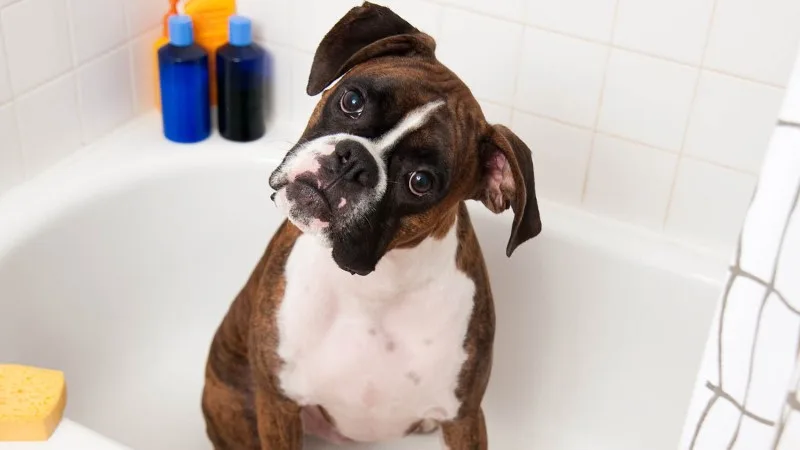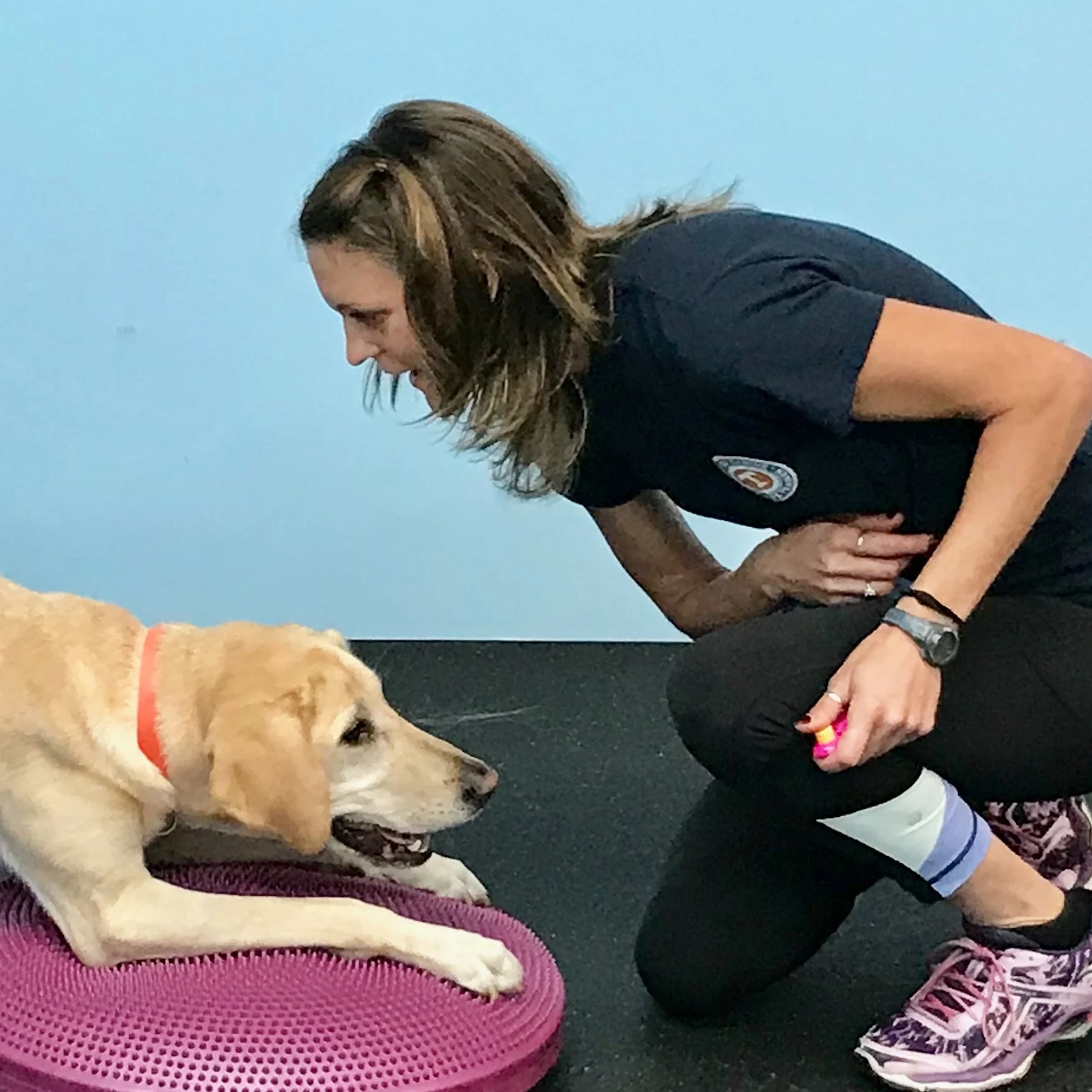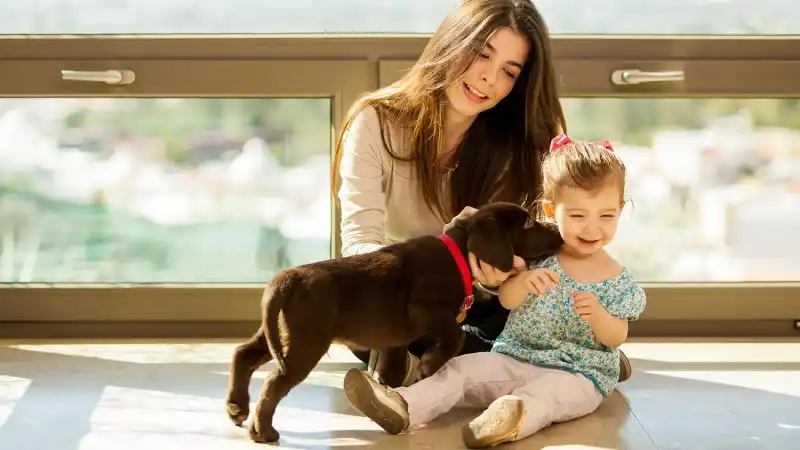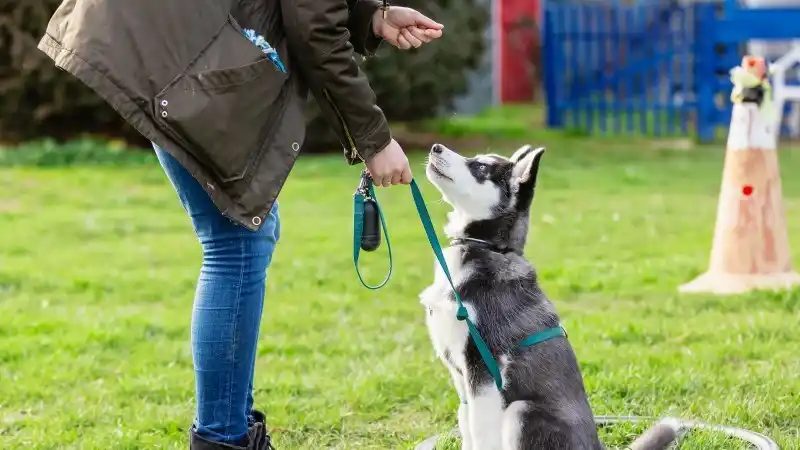Reducing Anxiety for a Dog that Hates Baths
Does your dog hate baths? Learn these tips to help reduce your dog's anxiety during bath time and how you can make it more enjoyable for your pet.

Are your dog baths a wiggle-filled wrestling match that leave the walls of the bathroom as wet as the tub? Is your dog scared of the bathroom? The tub? The shower head? Does your dog hate water in general?
Want to learn how to train your dog for canine bath time success and even reduce dog fear and anxiety in the process? Keep reading and we’ll explain how you can build upon positive experiences to help your dog adjust to bath time and master this key ownership and grooming skill.
Get the Right Dog Bathing Supplies
You need lots of soft, tasty dog treats – don’t use kibble in the beginning. After your dog has mastered bath time, you may be able to use kibble as a during or after-soak reward. In addition, invest in an extendable shower hose (6-8 feet is preferable) that is attached to a shower head or a pet hose. Having a hose to use in the bathtub is much easier than using a cup to rinse and wet your standing dog. It not only takes forever, but you’re rinsing with water that is no longer clean, and dogs seem to dislike the “cup-method.”
How to Bathe a Dog that Hates Baths in 3 Easy Steps
Let's go through a few simple steps you can use to build up to an actual bath with your dog.
First, you’ll want to work on getting your pup familiar with the bathroom and the tub itself -- from there, the process is all about introducing other aspects of bathing as you offer up treats.
Desensitize Your Dog to All Things Bath
Desensitize your dog slowly to ever aspect of the bathing area: the bathroom, bathtub, running water (from the handheld hose), and, finally, the pet washing process (split into three key phases).
Phase 1:
Give your dog a treat for entering the bathroom with you for a few sessions.
Let your dog eat treats off of the bathtub ledge for a few more sessions.
Pick up your dog, place them in the tub, and feed them lots of treats for another few sessions.
**Pro tip:**End the “eating treats in the tub” session when your dog is calm and happily eating. Do not end the session while your dog is squirming – instead, wait for a moment of stillness and then remove your dog from the tub (you don’t want your dog thinking that wriggling pups don’t have to take a bath).
If you try going through the steps of Phase 1 several times without success, it’s time to consider dog training for anxiety, as this may be the only way to calm your pup down.
Phase 2:
When standing in the tub is easy and stress-free for your dog, turn the water on, but be sure that it doesn’t touch your dog. Continue feeding treats and keeping your dog in the tub.
In the next few sessions, progress to having the water -- via the hose -- touch their toes. Give them lots of treats if they allow this without hesitation.
Gradually build up to your dog getting their legs and rib cage wet for several sessions.
Continue to be generous with treats and praise as you move through the steps of each phase. Eventually, you will be able to wet your entire dog down (avoiding their face and ear canals), while intermittently rewarding them with treats.
Phase 3:
The next step is adding a shampoo and rinse to the routine. If progressing to the next level of difficulty is too much for your dog, go back to the step where your dog is most comfortable and then slowly build back up to the final steps of bathing.
Make the Bathroom Fun
Although you may only need to bathe your dog once every four to eight weeks (depending on your dog’s breed and skin type), you’ll need to train them for “positive bath time” between actual baths to maintain the progress you have made.
A few times a week, treat your dog for entering the bathroom and sometimes have your dog eat a meal in a bowl in the tub without the water running. Occasionally, try scenarios where you have the water running and just wet your dog’s paws and legs. This is good conditioning for future practice and actual bathing.
You can also practice towel-drying your already-dry dog; treat your dog for standing still while being gently towel-dried. You may also brush your dog after bath training as well -- any added time you can spend in the bathroom together will be a building block toward success. Over time, you’ll have fewer and fewer “maintenance” training sessions of drying and brushing between actual baths.
Every Family Member Should Participate in Washing the Dog
A dog-owning friend, who initially struggled with bath time, says, “Involve all the members of your family in the care -- although ‘Mom’ may be doing most of it -- even if they don’t do it perfectly. It’s important for the dog to bond with everyone and for all to feel a relationship and a responsibility for the dog.”
Not only does this ensure that every member of the household is familiar with dog bath time, but it also sends your dog a message that they will be in capable hands no matter who is in charge.
Start Bathing Your Dog as a Pup
Another dog owner offers these words, “Even though Belle enjoys getting into the bathtub and eating her treats, getting her to the next step of an actual bath is very difficult. I know now that we should have begun consistent work on this as soon as she was brought home.”
This is an important lesson for dog owners. As soon as your dog is old enough to bathe -- around eight to 10 weeks of age -- introduce the concept of bath time. Once they have had their first bath, be sure to bathe your pup consistently. This will keep them clean while also conditioning them to accept bath time as a normal part of their routine.
Visit a Dog-Washing Station
After you’ve gotten your pup comfortable in the bathtub, look into renting a self-serve dog washing station at a local pet store. Some folks like to use rentals to avoid the cleanup related to home bath time, which often devolves into a fur-filled mess!
Use the same baby-steps to get your doggo comfortable in the rental station; however, because you’ve already mastered tub comfort at home, the desensitization process at the rental station should go more quickly. Don’t forget to bring tasty treats!
The Importance of Bath Time
Bathing your dog is not something you do just to keep your home clean and your dog smelling great. Bath time is a smart way to check for scratches or injuries that might get infected if your dog is dirty or otherwise unattended. Likewise, bathing your dog allows you to check more closely for things like ticks, chiggers, fleas, and other pests and parasites.
Bathing your dog allows you to familiarize yourself with your dog's anatomy, skin, and coat, so if a bump or lump or lesion pops up, you’ll know right away. As your dog ages, new things are bound to show up -- if you engage in regular bathing, you’ll find lumps faster and have a higher likelihood of a favorable prognosis.
Bathing can also help with your dog's shedding and be a great time to practice other types of grooming, like nail trimming. Maintaining a grooming schedule is a smart way to keep your dog healthy and happy!
Pet insurance is another great way to keep your pup healthy. Get a dog insurance quote from AKC Pet Insurance today (underwritten by Independence American Insurance Company) and prepare for unexpected accidents, illnesses, and much more.

Every Dog and Cat Deserves the Pet Insurance of Champions
Get prize-winning care for your pets.

Jasey Day holds the Certified Canine Fitness Trainer (CCFT) credential through the University of Tennessee. She is a member of the Bobbie Lyons K9FITteam - a team of compassionate canine fitness instructors who actively teach others and continually expand their own knowledge. Since 2004, Jasey has taught a variety of workshops and classes on the following: Puppy, Canine Good Citizen/Family Pet, Advanced Family Pet, Canine Fitness, Canine Swimming, Rally, and Agility. In addition, Jasey has earned over 60 titles in Dock Diving, Agility, Rally, CGC and Trick Dog. Jasey has worked full time for the American Kennel Club since 2007 and teaches at Care First Animal Hospital in Raleigh, NC. Jasey’s Labrador Retrievers spend their free time hiking, training, and snuggling with Jasey.
READ MORE ARTICLES

